Are you a beginner aquarist looking to add a touch of elegance to your aquarium? Look no further than the stunning Crinum Calamistratum, also known as the African Onion Plant.
This aquatic plant, with its long, slender leaves and unique appearance, can be a captivating addition to any tank.
In this care guide, we will provide you with essential tips and information to help you successfully care for Crinum Calamistratum. From tank setup to propagation and care, we’ve got you covered.

Key Takeaway
- Crinum Calamistratum, also known as the African Onion Plant, is a beautiful aquatic plant ideal for beginners.
- Proper tank setup, including the right tank size and substrate, is essential for the plant’s growth and development.
- Crinum Calamistratum requires medium to high levels of aquarium lighting to thrive.
- Maintaining optimal water conditions, including pH, water hardness, and temperature, is crucial for the plant’s health.
- Regular maintenance, pruning, and cleaning are necessary for the plant’s overall well-being.
Quick Stats
| Attribute | Details |
| Family Name | Amaryllidaceae |
| Origin | West Africa |
| Height | 40-120 cm (16-47 inches) |
| pH Range | 6.5 – 7.5 |
| CO2 Requirement | Low to Moderate |
| Growth Rate | Slow |
| Care Level | Moderate |
| Color Form | Dark Green |
| Water Conditions | 22-28°C (72-82°F), soft to moderately hard water |
| Max Size | Leaves can grow over 1 meter in length under optimal conditions |
| Lighting | Moderate to High |
| Supplements | Root tabs or a nutrient-rich substrate; benefits from additional iron |
| Placement | Background due to its potential height |
| Propagation | Mainly through seeds; occasionally offsets from the base |
What Is Crinum Calamistratum?
Crinum calamistratum, also known as the African Onion Plant, is an aquatic plant native to Africa, specifically found in Cameroon. It is characterized by its long, slender leaves that resemble onions, giving it its unique appearance.
This plant can grow up to 4 feet long and has the potential to produce beautiful white flowers. It is a popular choice among aquarists for its aesthetic appeal and ease of care.
The Natural Habitat Of Crinum Calamistratum
- Crinum calamistratum, also known as the African Onion Plant, is commonly found in freshwater and brackish waters in Africa, specifically in the west and central regions. This aquatic plant is native to Africa and thrives in its natural habitat, where it can fully submerge underwater and withstand brief periods of drought.
- The plant’s natural habitat provides important insights for aquarists looking to replicate the ideal conditions for crinum calamistratum in an aquarium setting. Being a geophyte with underground perennial organs, this plant has adapted to survive harsh seasons and fluctuating water conditions.
- To understand the natural habitat of crinum calamistratum, it’s crucial to recognize its preference for freshwater and brackish waters. This plant can be found in various aquatic environments, including rivers, streams, and swamps in Africa.

| Natural Habitat Characteristics | Details |
| Water Type | Freshwater and brackish waters |
| Geophyte Adaptation | Underground perennial organs |
| Survival Ability | Can withstand brief periods of drought |
Physical Characteristic
- Leaves: The leaves of Crinum calamistratum are long, narrow, and ribbon-like, resembling blades of grass. They can grow to considerable lengths, often reaching up to 50-60 centimeters (20-24 inches) or more in ideal conditions. The leaves have a deep green coloration and may exhibit slight undulations or twists along their length, giving them a graceful and flowing appearance.
- Root System: Crinum calamistratum typically develops a robust root system consisting of thick, fleshy roots that anchor the plant securely in the substrate. These roots may spread horizontally as the plant matures, helping to stabilize it and absorb nutrients from the surrounding water and substrate.
- Bulb: Like other Crinum species, Crinum calamistratum features a bulbous rhizome or bulb from which the leaves emerge. The bulb is usually buried partially in the substrate, with the majority of its mass located below the surface. It serves as a storage organ for nutrients and energy, enabling the plant to withstand fluctuations in environmental conditions and recover from periods of stress.
Crinum Calamistratum Lighting Needs
- Proper lighting is crucial for the growth and overall health of Crinum calamistratum. This aquatic plant requires medium to high levels of aquarium lighting to thrive. Adequate light supports the plant’s growth and plays a significant role in the potential blooming of its beautiful white flowers.
- When designing your aquarium setup for Crinum calamistratum, it is important to consider its lighting requirements. Installing appropriate aquarium lights that provide the necessary intensity and spectrum will help ensure this plant’s proper development and flourishing.
Temperature Parameters
- Crinum calamistratum thrives in tropical freshwater aquariums with stable temperature parameters. The optimal temperature range for its growth typically falls between 22°C to 28°C (72°F to 82°F).
- Maintaining the aquarium temperature within this range is crucial for promoting healthy growth and overall well-being of the plant. Fluctuations outside of this range may stress the plant and impede its growth.
- It’s essential to use a reliable aquarium heater and thermometer to monitor and regulate the water temperature consistently. Additionally, providing a stable temperature environment contributes to the overall health of the aquatic ecosystem, ensuring the well-being of both the plant and other tank inhabitants.
RELATED: The Aquatic Wonder Bacopa Australis To Transform Your Aquascape
Optimal Water Conditions
- Proper water conditions are crucial for the health and well-being of Crinum calamistratum. Maintaining the right temperature, pH level, and water hardness is essential for its growth.
- Aim for a temperature range of 68-82°F (20-28°C) and a pH level between 6.1 and 7.9 to provide an ideal environment for the plant to thrive.
Substrate And Planting Basics
- It is important for Crinum calamistratum to select the appropriate substrate. A nutrient-rich substrate, such as aquarium soil or fine gravel, is recommended to support its growth.
- When planting the plant, make sure to bury the bulb partially, leaving the upper section exposed. This will ensure that the leaves can elongate properly.
| Tank Size | Water Temperature | pH Level | Water Hardness | Substrate |
| Minimum 20 gallons (75 liters) | 68-82°F (20-28°C) | 6.1-7.9 | Up to 18 dGH | Nutrient-rich substrate |
Placement Option
- Foreground Placement: Crinum calamistratum can be placed in the foreground of your aquarium, creating a focal point and drawing attention to its long, slender leaves. This placement allows the plant to stand out and adds depth and dimension to your aquascape.
- Group Planting: Planting multiple crinum calamistratum specimens together in a group can create a striking visual effect. The overlapping leaves and unique growth patterns can create an interesting texture and add movement to your aquascape.
- Contrasting Colors: Pairing crinum calamistratum with contrasting plants can create a visually appealing contrast in your aquascape. Consider using plants with vibrant green or red leaves to complement the white, onion-like leaves of crinum calamistratum.
Choosing The Right Tank Size
- Crinum calamistratum is known for its long, slender leaves, which can reach impressive lengths. Therefore, it is important to select a tank size that can accommodate the plant’s growth.
- A larger tank with ample space will allow the leaves to spread out and create a visually appealing display.
Suitable Tank Mates
- Community Fish: Many peaceful community fish species make excellent tank mates for Crinum calamistratum. Some examples include tetras (such as neon tetras, cardinal tetras, and ember tetras), rasboras, danios, gouramis, small barbs, and peaceful dwarf cichlids like Apistogramma species. These fish typically inhabit different levels of the tank and pose little risk of damaging the plant.
- Bottom Dwellers: Small to medium-sized bottom-dwelling fish species are compatible with Crinum calamistratum. Examples include Corydoras catfish, otocinclus catfish, dwarf plecos (such as bristlenose plecos), and small loaches. These fish help keep the substrate clean and add activity to the lower levels of the aquarium without disturbing the plant.
Shrimp and Snails: Cherry shrimp, Amano shrimp, ghost shrimp, and various snail species like nerite snails and Malaysian trumpet snails can coexist peacefully with Crinum calamistratum. These invertebrates help maintain the aquarium’s cleanliness by consuming algae and detritus, and they do not pose a threat to the plant.
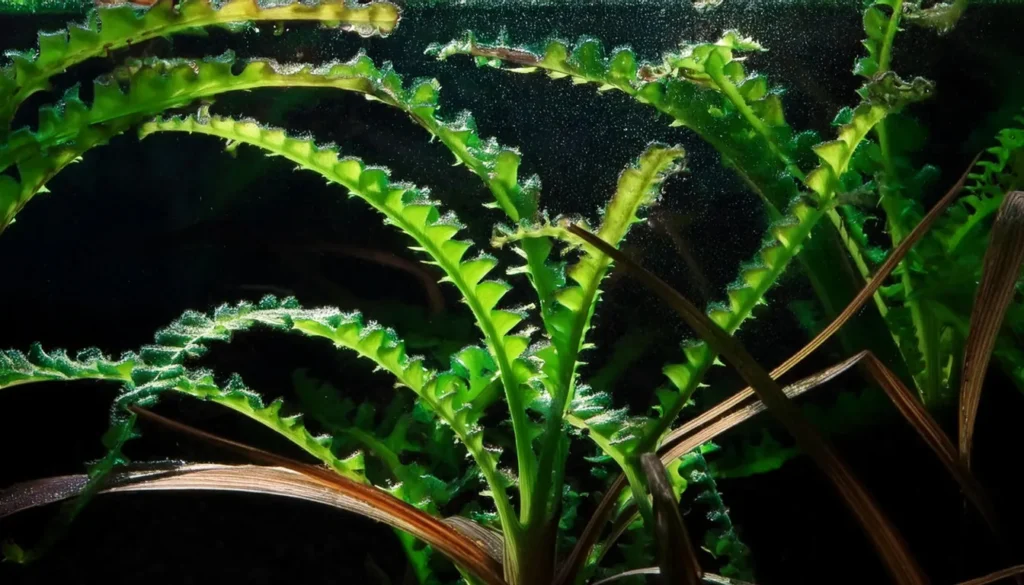
Managing Nutrients And CO2
- Crinum calamistratum requires a balanced supply of nutrients to support its growth and development. Essential macro- and micronutrients are crucial for the plant’s health. Incorporating a high-quality aquatic fertilizer formulated specifically for aquarium plants can help ensure that crinum calamistratum receives the necessary nutrients.
- In some cases, supplementing carbon dioxide (CO2) can also benefit the crinum calamistratum’s growth. CO2 supplementation can promote faster and healthier growth, enhance leaf coloration, and increase the chances of blooming in this plant.
- It is important to note that not all aquarium setups require CO2 supplementation, so assessing your specific setup and the needs of your crinum calamistratum plants before introducing CO2 is essential.
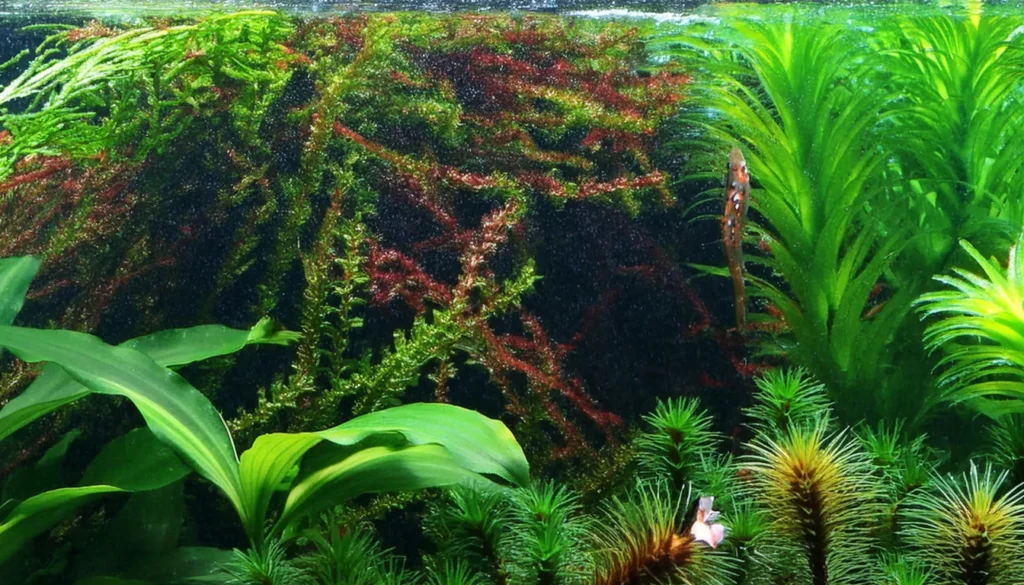
Cultivating Crinum Calamistratum
Proper planting and regular care are essential for the well-being of the crinum calamistratum. Follow the instructions below to successfully plant this aquatic plant in your aquarium substrate and provide the necessary care for its healthy growth.
Planting
- Choose a suitable location in your aquarium where the crinum calamistratum will receive enough light and have enough space to grow.
- Carefully plant the bulb of the crinum calamistratum in the substrate, ensuring it is half-buried and the roots are well-covered.
- Ensure the bulb is planted sufficiently deep and shallow, as this can affect the plant’s ability to establish roots and grow.
- Gently press the substrate around the bulb to secure it and prevent it from floating or shifting.
- Once planted, slowly fill the aquarium with water to avoid disturbing the substrate and uprooting the plant.
Caring
- Monitor the water temperature regularly and maintain it within the recommended range of 68-82°F to ensure optimal growth.
- Regular water changes should be performed to maintain water quality and prevent the accumulation of harmful substances.
- Inspect the crinum calamistratum regularly for any signs of issues, such as yellowing leaves, algae growth, or pests.
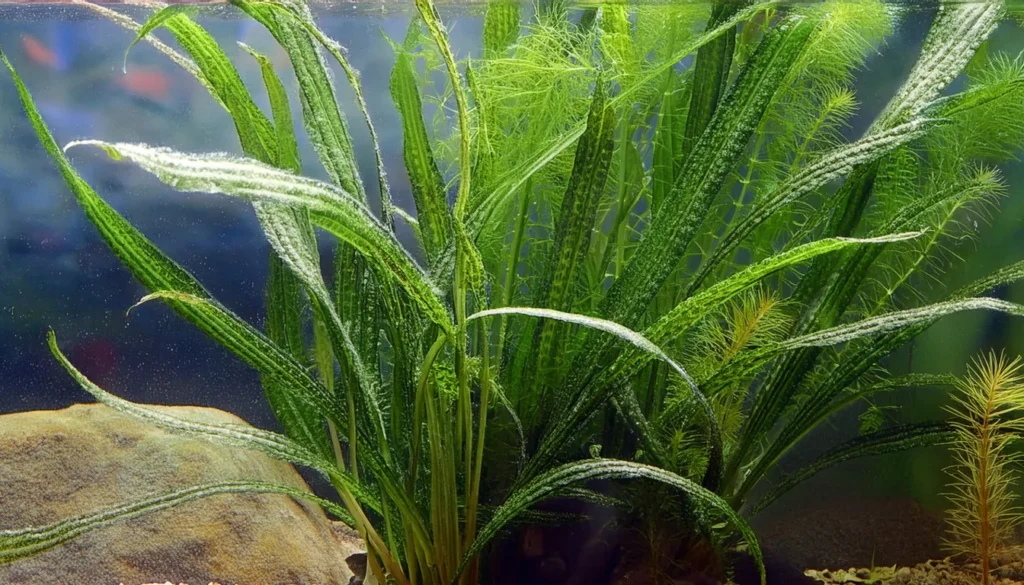
When And How To Propagate?
- Division: Carefully separate the plant into smaller sections, ensuring each section has healthy roots. Plant the divided sections in separate pots or directly in the aquarium substrate. This method is suitable for more mature plants with well-established root systems.
- Bulb Offsets: Crinum calamistratum produces bulb offsets or baby bulbs around the base of the parent bulb. Gently detach these small bulbs from the parent, ensuring they have their roots. Plant them individually in pots or the aquarium substrate.
- Leaf Cuttings: If your crinum calamistratum has long, healthy leaves, you can take leaf cuttings and plant them in a separate pot or substrate. Ensure the leaf cutting has a small portion of the bulb attached, which will help in root development.
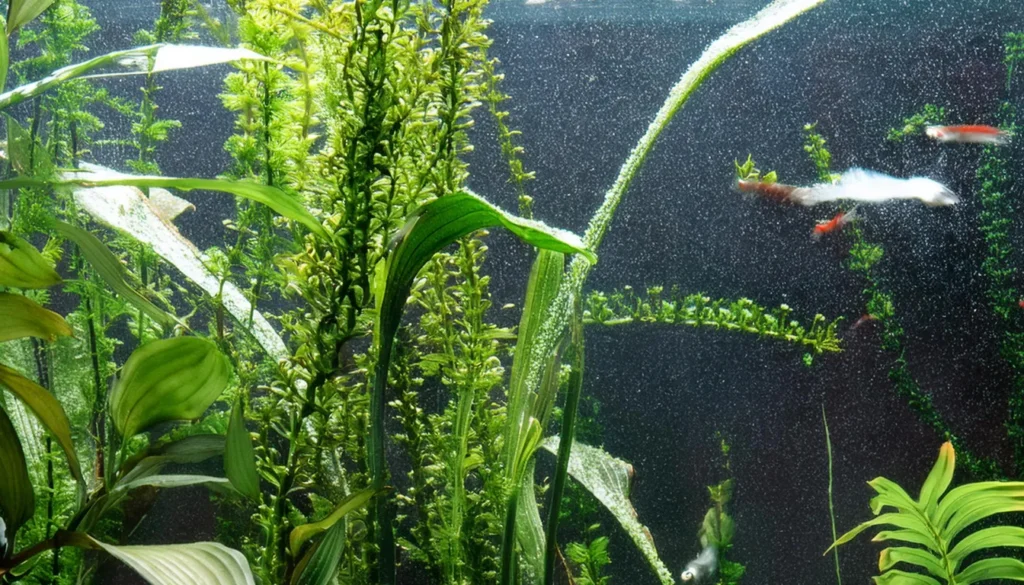
Caring For New Shoots
- Water Quality: Maintain clean and well-filtered water to promote healthy growth. Regular water changes can help maintain water quality and prevent the buildup of harmful substances.
- Lighting: Ensure the new shoots receive appropriate lighting. Crinum calamistratum generally requires medium to high levels of aquarium lighting, similar to those suitable for the parent plant.
- Fertilization: Consider supplementing the new shoots with liquid or substrate fertilizers to give them essential nutrients for growth. Follow the recommended dosage and schedule for the fertilizers you use.
- Temperature and Water Parameters: Maintain stable water temperature, pH, and hardness within the recommended range that is suitable for crinum calamistratum. Fluctuations in these parameters can stress the new shoots and hinder their growth.
- Avoid Disturbance: Allow the new shoots to establish their roots without disturbing them. Avoid uprooting, replanting, or moving them unnecessarily, as this can cause stress and slow their growth.
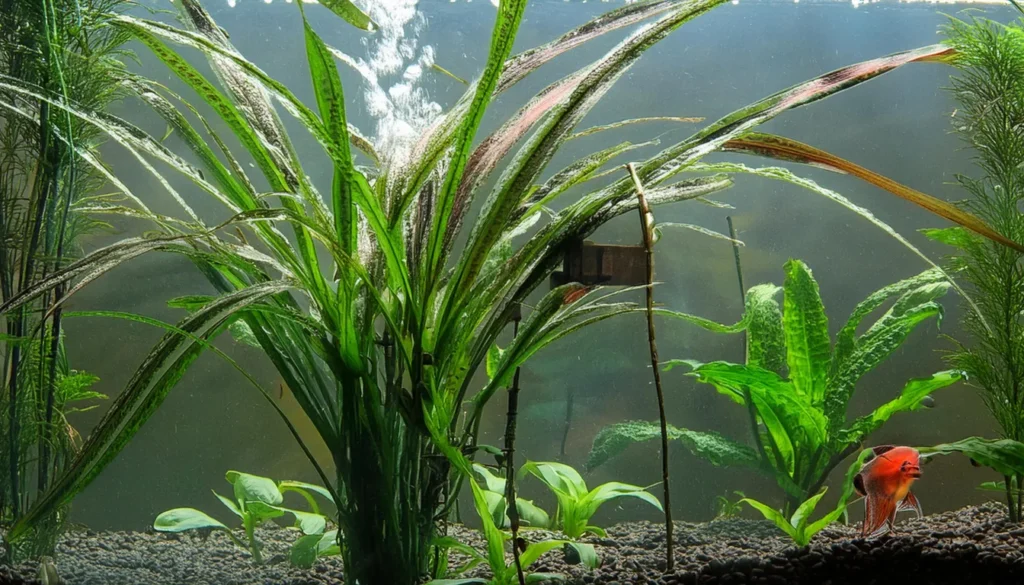
Common Challenges And Solutions For Crinum Calamistratum
- One of the main challenges that aquarists may encounter with crinum calamistratum is algae growth. Algae can quickly overtake the plant, affecting its growth and appearance. To address this issue, proper lighting and nutrient management are crucial.
- Ensure that the aquarium receives the appropriate amount of light, avoiding excessive or insufficient exposure. Implement a consistent and balanced fertilization regimen to prevent excess nutrients that can contribute to algae growth.
- Regular maintenance practices such as cleaning the aquarium substrate and removing any decaying leaves or debris can also help control algae.
- Nutrient deficiencies can also impact the health of the crinum calamistratum. Common signs of nutrient deficiency include yellowing of leaves, stunted growth, or weakened overall appearance.
- Aquarists should regularly monitor and test the water parameters to ensure that the necessary nutrients are available for the plant’s uptake. Appropriate fertilizers or supplements should be added to the aquarium if deficiencies are detected.
- Consult with knowledgeable experts or conduct research to determine the specific nutrient requirements of the crinum calamistratum.
- Pest infestations can pose a significant risk to the health of the crinum calamistratum.
- Common pests that can affect this plant include snails, aphids, and planaria. Inspect the plant regularly for any signs of infestation, such as visible pests or damage to the leaves. If pests are detected, prompt action should be taken to prevent further damage.
- Manual removal of pests, using organic pest control methods, or introducing natural predators can help eliminate the infestation. Maintaining a healthy and balanced ecosystem in the aquarium is important to minimize the risks of pest outbreaks.
RELATED: Grow Cryptocoryne Lutea For Vibrant Aquariums With This Simple Guide
Conclusion
Crinum calamistratum is a stunning aquatic plant that can add beauty and uniqueness to any aquarium.
With proper care and attention to its specific needs, beginners can successfully cultivate and enjoy its benefits.
By following the care guide and tips in this article, you will be equipped with the knowledge and understanding to create a thriving environment for your crinum calamistratum.
Remember to choose the right tank size, establish optimal water conditions, and provide the necessary substrate and planting basics.
Furthermore, it is important to consider the lighting needs and maintain the proper water chemistry for your crinum calamistratum. Regular planting and care, including pruning and cleaning, are essential for health and well-being. When it comes to propagation, follow the recommended techniques and care for the new shoots.
Frequently Asked Questions
What Are The Optimal Water Parameters And Conditions For The Growth Of Crinum Calamistratum In An Aquarium Setting?
Crinum Calamistratum thrives in water temperatures between 22°C to 28°C (72°F to 82°F), with a pH range of 6.5 to 7.5. It prefers soft to moderately hard water, with a hardness range of 4 to 12 dGH.
While this plant is adaptable to various water conditions, stability is key; sudden changes in water parameters can stress the plant.
Adequate water flow is also beneficial, as it mimics the plant’s natural riverine habitat, helping to deliver nutrients to the leaves and keep them free of debris.
How Does Crinum Calamistratum Respond To Different Lighting Conditions, And What Is The Ideal Lighting Setup?
Crinum Calamistratum requires moderate to high lighting to flourish and maintain its vibrant green color and characteristic curly leaves. An ideal lighting setup would provide 50 to 70 micromoles of PAR, ensuring that the light penetrates the water column to reach the plant’s base.
While the plant can survive in lower light conditions, its growth may be stunted, and the leaves may become less curly. Providing consistent light for 10-12 hours per day simulates natural daylight cycles and supports healthy growth.
What Specific Substrate Is Recommended For Crinum Calamistratum, And How Does It Affect Root Development?
Crinum Calamistratum has a robust root system that benefits from a nutrient-rich substrate with a granular size that allows for good water circulation. A mixture of sand and clay, possibly enriched with laterite, is ideal for supporting its growth.
The substrate should be deep enough to anchor the plant securely, typically around 3-5 inches. This depth allows the roots to spread adequately and access the nutrients they need to thrive. While the plant can grow in less ideal substrate conditions, its growth may be slower and less vigorous.
Can Crinum Calamistratum Be Propagated In Home Aquariums, And What Method Is Most Effective?
Propagating Crinum Calamistratum in home aquariums can be challenging but is achievable. The most common method is by separating offsets or “pups” that grow from the base of the parent plant.
These offsets can be carefully detached when they have developed a sufficient root system and a few leaves of their own. Planting these offsets in the substrate will eventually lead to the growth of new, independent plants.
It’s important to note that patience is required, as Crinum Calamistratum grows and propagates more slowly than many other aquatic plants.
What Are The Main Challenges In Maintaining Crinum Calamistratum, And How Can Aquarists Overcome Them?
One of the main challenges in maintaining Crinum Calamistratum is ensuring it receives adequate light, as its tall and dense foliage can shade itself or other plants.
Regular pruning of older leaves from the base can help light reach the lower parts of the plant and the aquarium. Another challenge is providing it with a suitable substrate for its extensive root system; ensuring the substrate is nutrient-rich and adequately deep is crucial.
Additionally, being a slow grower, it may be outcompeted by faster-growing plants for light and nutrients, so its placement and the tank’s overall plant composition should be carefully considered.
Lastly, patience is key with Crinum Calamistratum; its slow growth rate means it can take time to establish and flourish in an aquarium setting.
- Unveiling The Wonders Of Riccia Fluitans In Aquascapes - August 7, 2024
- Vallisneria Gigantea Var. Guide To Care And Cultivation At Home - July 31, 2024
- Vesicularia Dubyana Care & Growth Guide Tips For Beginner Gardeners - July 30, 2024
